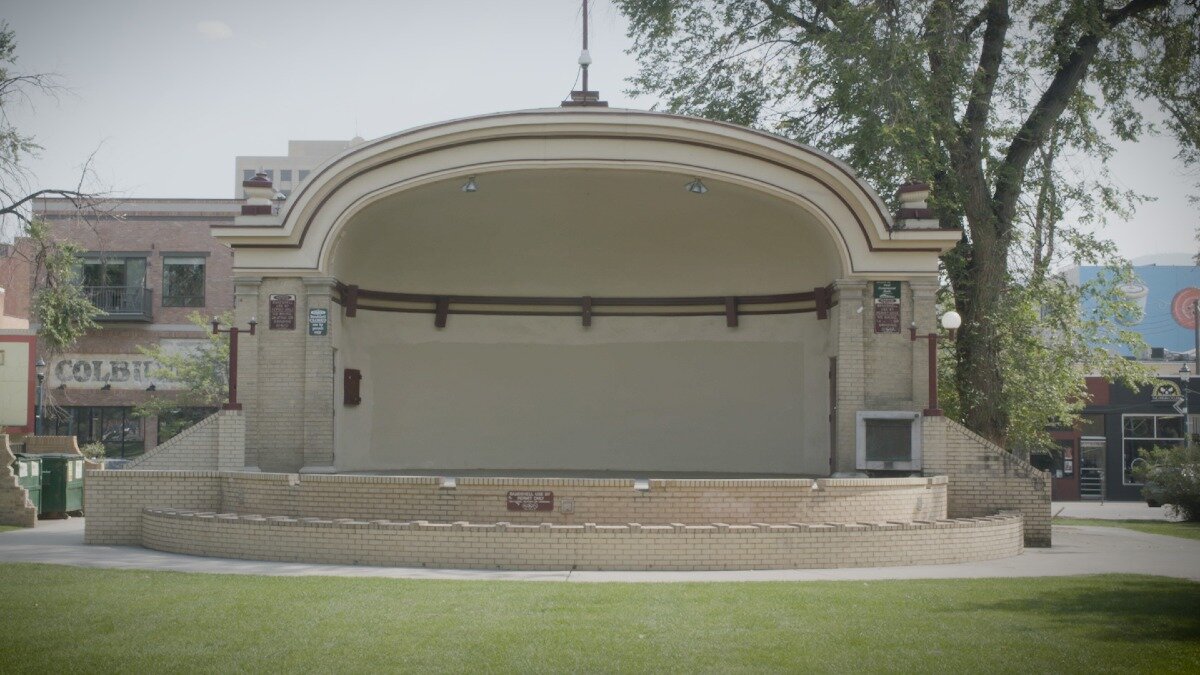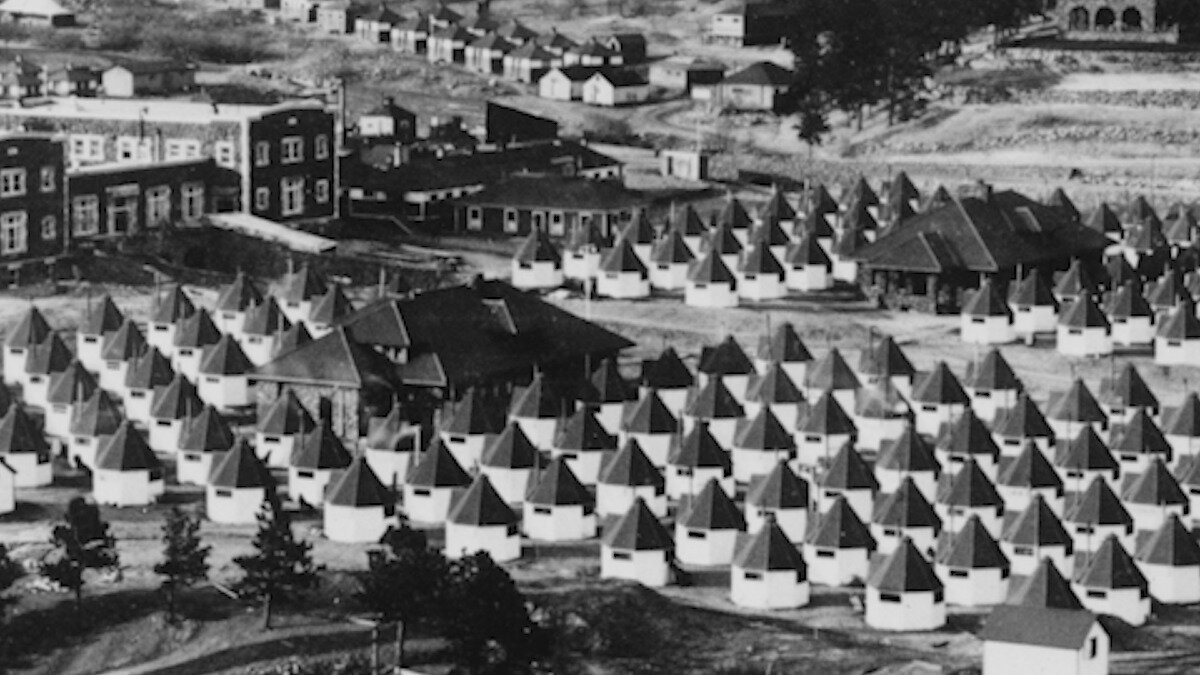Iconic historic structures reflect Colorado Springs’ 150-year history

“Colorado Experience: Lost and Preserved in Colorado Springs” premieres on Rocky Mountain PBS on Thursday, February 4 at 7 PM. You can watch the full episode here.
COLORADO SPRINGS, Colo. — The Colorado Springs Pioneers Museum. The City Auditorium. City Hall. The Colorado Springs Day Nursery. The Post Office.
What do these buildings have in common?
They are all structures listed on the National Register of Historic Places, authorized by the National Historic Preservation Act of 1966. It’s part of a national program to identify and support both public and private efforts to protect America’s historic and archaeological resources. Over 50 structures in Colorado Springs and the surrounding area have been deemed historically and architecturally notable, and worthy of preservation.
“I love the downtown, and just walking the streets of downtown, to see the buildings that have survived,” said Matt Mayberry, Director of the Colorado Springs Pioneers Museum. “Historic architecture is really the tangible evidence of who we are as a community.”
John Harner, Professor in the Department of Geography and Environmental Studies at UCCS, agrees. “The landscape of the built environment tells a story,” he said. “It tells us about who we are. It tells us about our values.”
“We need those stories.”
From a wealthy, getaway tourist town, to a gold rush epicenter; to a tuberculosis respite, to the home of five military installations — the built landscape of Colorado Springs reflects these stories, containing the history of the city’s major industries and economic drivers.
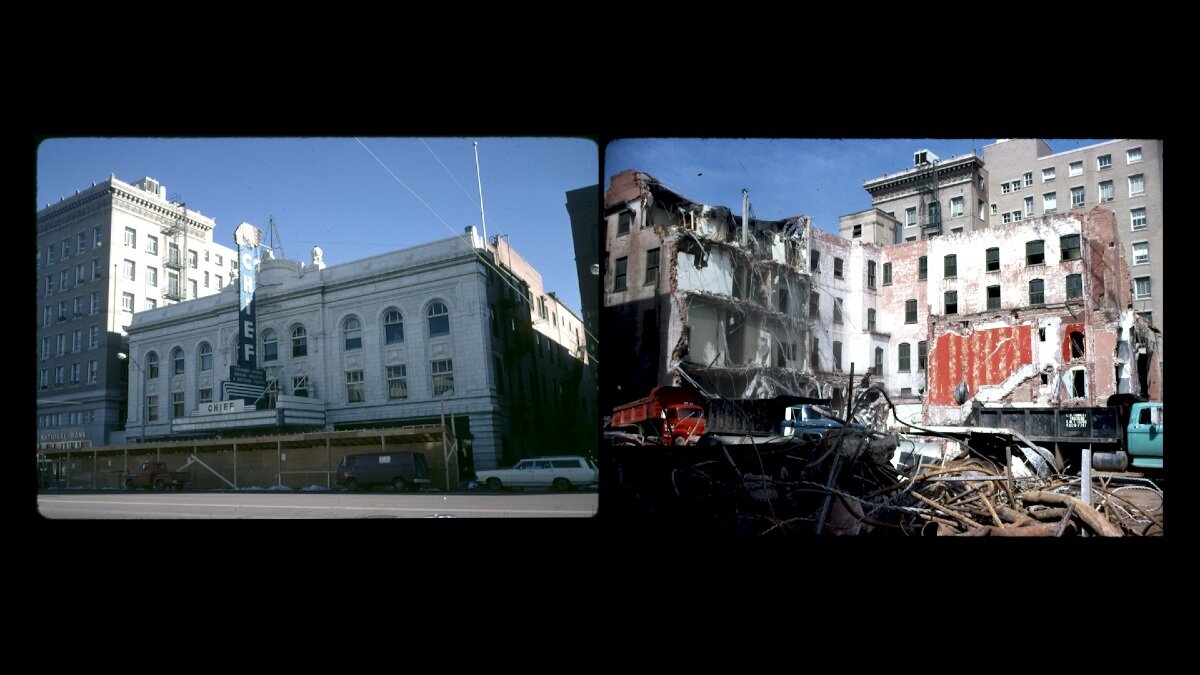
“The Burns was a building beloved by generations of Colorado Springs residents,” recalled Witherow. “And when that building was torn down, our community was embittered.”
“It led the community to advocate in 1983 that there should be a Historic Preservation Ordinance to protect historically significant properties,” explained Scanlon.
“And so,” said Mayberry, “the historic preservation movement came out of this demolition of historic properties and buildings that had helped to shape the downtown for decades.”
One of the first intentional efforts by citizens to save a building for Historic Preservation purposes was the 1904 El Paso County Courthouse, the first local building to be added to the National Register in 1972.
“Because of Urban Renewal efforts, the Courthouse was threatened with demolition,” said Mayberry. “The community rose up and had decided that they’d lost enough historic structures in the downtown area. And there was a public will to see that this building would survive.”
The building was reimagined into something new — a museum to house to community’s history. It is now the Colorado Springs Pioneers Museum.
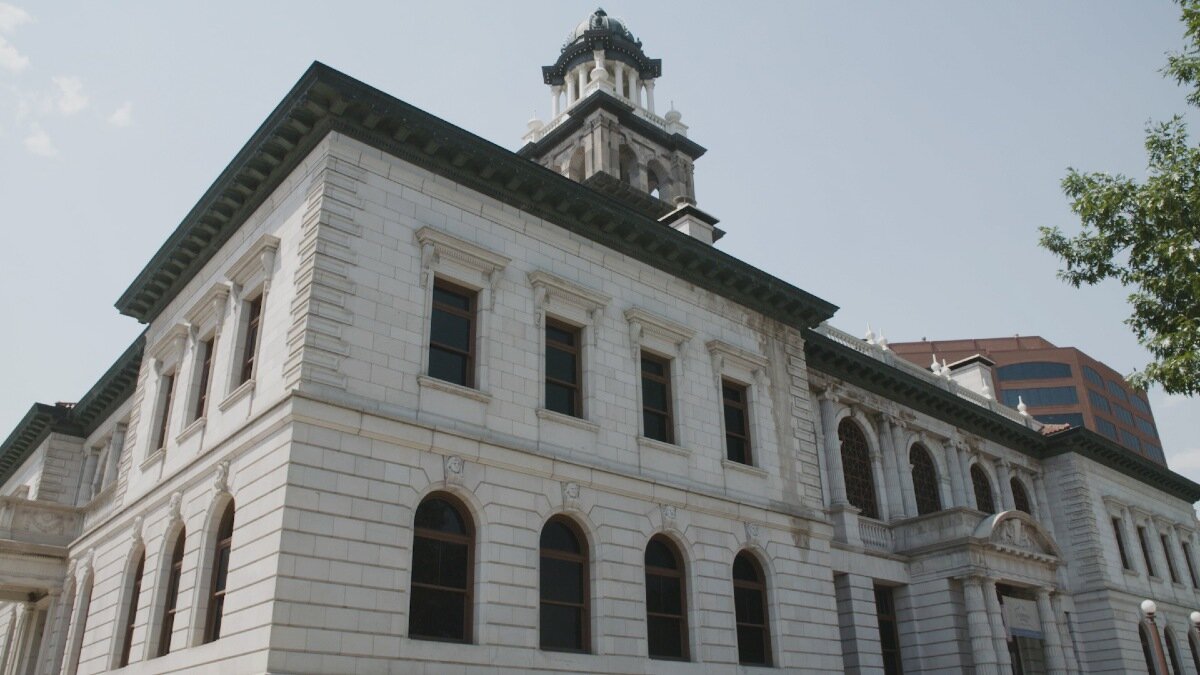
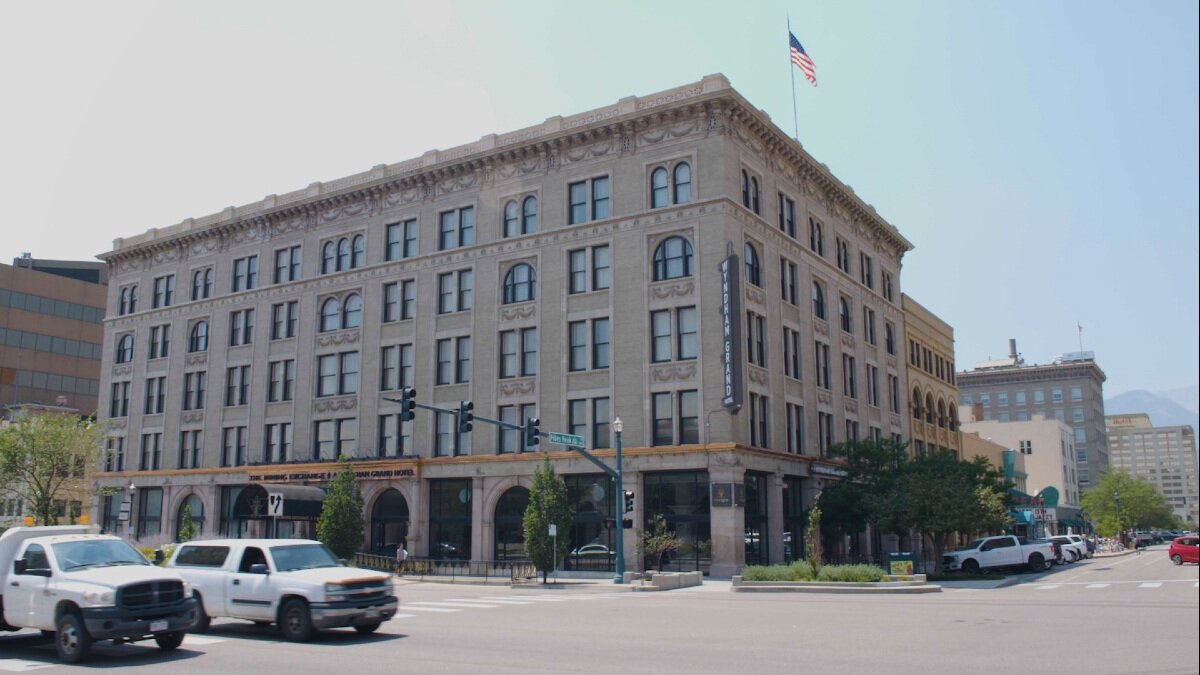
“Historic properties are tangible evidence of our community’s history,” said Mayberry. “They are kind of in-your-face reminders that this community has been around a long time, has gone through changes — but we're still here, we're still growing, we're still becoming the community we're going to become. And having that evidence of the past is critical to creating a sense of place, a sense of community identity.”
“Historic preservation is based on the notion that change is inevitable,” said Scanlon. “But with effort, you can shape that change.”
“Colorado Experience: Lost and Preserved in Colorado Springs” premieres on Rocky Mountain PBS on Thursday, February 4 at 7 PM.
Additional reading: The Colorado Springs Pioneers Museum Celebrates Sesquicentennial with Exhibit.
In tandem with drawing vacationers from around the globe, Colorado Springs also commodified itself as an elite health resort.
“At the time Colorado Springs was founded, tuberculosis was one of the leading killers in the country and around the world,” said Mayberry. “And because we are a high, dry climate with lots of sun, where you can essentially be outdoors 12 months of the year, we actively marketed ourselves as a destination for tuberculosis patients.”
There were more than a dozen large-scale tuberculosis facilities in operation at any time, dotting the landscape of Colorado Springs.
The physical remnants of this era remain, including “sleeping porches” on many of the homes in the Historic Old North End.
“Sleeping porches were specifically designed to allow people who lived in those homes to spend as much time in fresh air as possible,” Mayberry said. “You can also see, if you know what you're looking for around downtown, tuberculosis huts.”
These small, self-contained living quarters were a way to isolate patients while allowing them to get fresh air, have shelter, and be cared for by staff nurses.
Buildings on Old Colorado City’s Colorado Avenue were also threatened with demolition, then preserved by citizen activists and rehabilitated to a now-successful tourist and business center.
Reimagining other historic buildings followed, including the Cheyenne Building, Ivywild School, and the Lincoln School, all renovated into restaurants and business centers. The Mining Exchange building was converted into the Mining Exchange Hotel, and its neighbor, the former Municipal Utilities Building, is now the Gold Room, an entertainment venue.
Mayberry said that there is growing consensus about the "business sense" of saving historic buildings.
In 2019, as part of a comprehensive master plan for the community, the City of Colorado Springs approved a Historic Preservation Master Plan.
“Historic COS recommends that we see the role, the value, and the economic purpose of historic preservation for this community,” said Mayberry. “It recommends that we do a better job of communicating what historic preservation means to neighborhoods and to private property owners, and that we provide tools to them that can help to encourage historic preservation.”
One structure facing rehabilitation is the Acacia Park Bandshell, built in 1914.
“We heard loud and clear through that master planning process that it's valuable, it's important to keep,” said Mayberry. “And so what we have committed to as the City of Colorado Springs is to figure out how we can save the building itself, but make it still useful as a performing site.”
As tuberculosis gained new chemical treatments by the end of the World War II, the sanitariums closed.
“The Chamber of Commerce and local businesses leaders began to look for new economic drivers,” said Witherow.
“Also at that point, the Army was looking for a new training base,” added Mayberry. “We actively recruited the military to come to Colorado Springs. We offered them land south of downtown, and other incentives.”
“That really began to change the economy of Colorado Springs,” said Witherow. “From the 1940s onward, we’re looking for military opportunities to bring an infusion of federal dollars here. And that radically alters our landscape.”
Following Camp Carson — later Fort Carson — Colorado Springs recruited the Air Force Academy.
“Then NORAD was built under Cheyenne Mountain,” said Mayberry. “Peterson Air Force base became the home of U.S. Space Command. Shreiver Airforce Base became a significant home for satellite technology. And so we have these five major defense installations in Colorado Springs — and there’s talk about the Space Force being housed here.”
“At a time when our economy was changing, and could no longer rely on tuberculosis, the military was what we turned to,” said Mayberry. “And it was that change in our economy this had such an extraordinary impact on who we are as a community.”
The change that happened after World War II was particularly evident in the downtown landscape. As population growth and urban sprawl pushed the city’s boundaries further out, “the downtown inner core began to decay,” said Witherow.
And it wasn’t just in Colorado Springs.
“In the post-war years from the 1950s to the 1970s, downtowns across the country were having to go through reinvention because of changes in the economy,” said Mayberry. “There was flight from downtown to suburban areas, and growth of malls.”
In an effort to revitalize urban cores across the United States, tax incentives were offered to take down historic structures and old businesses, and to raise new, modern buildings in their place.
“There were many historic structures lost to urban renewal,” said Mayberry.
“The reason stated — and this was typical across the country — was that they were obsolete,” said Harner. “Oftentimes, the standard response was that it was cheaper to rip a building down, and build a new one. And we did a lot of that in Colorado Springs.”
Whole blocks of historic structures were razed.
“Those blocks encompassed some important businesses, some legacy businesses,” said Witherow. “Local governments essentially declared certain sections of downtown to be blighted, to bring in federal dollars to rebuild, reimagine, wipe away the past, and build new buildings.”
Racism and discrimination played a role in urban renewal decisions.
“When you look at these neighborhoods which were declared blighted, no coincidence,” said Harner. “Where were they? African American, Latino, and minority neighborhoods. In the downtown, which used to be the historical African American neighborhood where there were a lot of people living, but also a lot of independent businesses, including probably the most famous, the Cotton Club of Fannie Mae Duncan — all those were ripped out.”
“So urban renewal is tinged with partition ideas of what buildings should be preserved, and what buildings need to go,” said Witherow. “It is a solution to some, and it's an assault to others.”
Other iconic buildings lost included the Colorado Springs High School, the Alamo Hotel, the second Antlers Hotel, and the Burns Opera House, later known as the Chief Theater. The latter was torn down by private property owners in order to make way for a parking lot.
“The Burns was a marvelous building,” said Tim Scanlon, Historian and City of Colorado Springs Senior Planner from 1985 to 2009. “It was beautifully constructed. There were no interior pillars. The tax code favored new construction over rehabilitation, and so, they demolished it. If we could have that theater today, it would be a tremendous asset to the city of Colorado Springs.”
“Colorado Springs was founded July 31, 1871 on a short grass prairie, built on this idea that we were a beautiful place with great scenery, close proximity to the mountains, and a wonderful climate,” said Mayberry.
Before colonization and the presence of Western influence, upwards of 50 tribes and nations called the area home, or routinely traveled through on cultural, trade, and migratory paths.
“We have to remember that there have always been people here,” said Mayberry. “We often think of Colorado Springs and the Pikes Peak region as a cultural crossroads. That recognizes the fact that people have lived in the shadow of Pikes Peak for eons, including the Kiowa, the Comanche, the Arapaho, the Cheyenne, the Apache, the Ute Mountain Ute, and the Southern Ute.”
“Human history in the Pikes Peak region goes back tens of thousands of years,” said Leah Davis Witherow, Curator of History at the Colorado Springs Pioneers Museum. “And for the Ute, this is their ancestral homeland. Culturally, historically — this is their place of being.”
Tribes were forcibly removed during the onset of Western expansion.
“As white settlers came on a more permanent basis, tribes were pushed out,” said Witherow. “The Cheyenne and Arapaho were first placed on a reservation in 1861, and then later relocated to the Oklahoma Territory.”
“You can still see those cultural traditions reflected in place names,” added Mayberry, “including Cheyenne Mountain, Uintah Street, and Kiowa Street. That's just one way that we can remember the people that have been here before us.”
Founded as a tourist oasis, Colorado Springs relied on attracting travelers to grow and sustain.
“Tourism was our greatest industry,” said Witherow. “We commodified our beautiful, natural scenic environment, our healthy, clean air, and our sunshine-filled skies.”
“We have used that to market the city from the earliest days, as a sort of original wealthy, getaway tourist resort,” said Harner. “Tourism and creating the West as a part of the American icon happened here.”
“You can see that we were a tourist community through the Alamo Hotel, the Acacia Hotel, and through other historic structures that serve tourists who arrived here either by car or by train,” explained Mayberry.
Still, the area was a “a pretty sleepy town for the first few decades,” according to Witherow.
The first major change that happened to Colorado Springs was driven largely by the discovery of gold.
“Because of the Cripple Creek gold mine strike in the 1890s, there was a huge injection of wealth into the city,” said Harner. “A lot of that money went into building some of our most famous buildings — many of which are gone now.”
Largely located in the downtown historic core of the community, these gold rush totems include the Mining Exchange, the Independence Building, the Post Office and Federal Building, City Hall, and the El Paso County Courthouse — all remaining evidence of the city’s early wealth.
